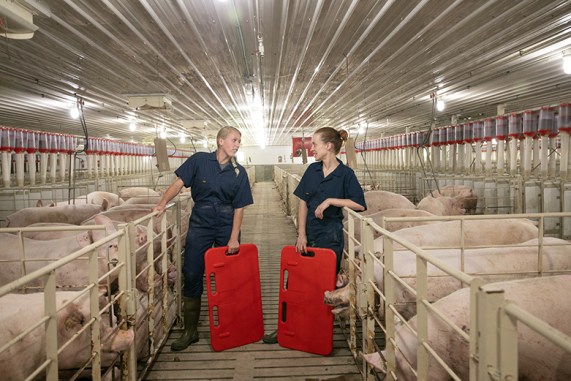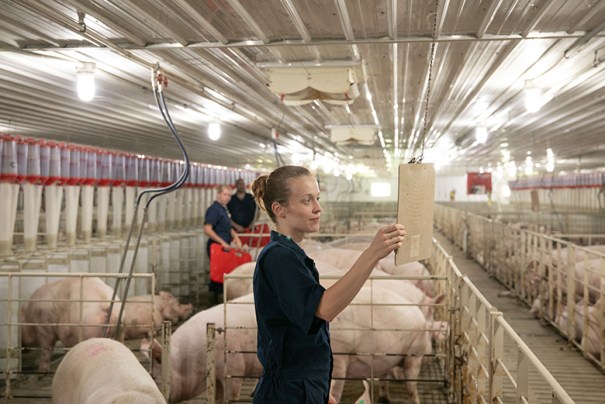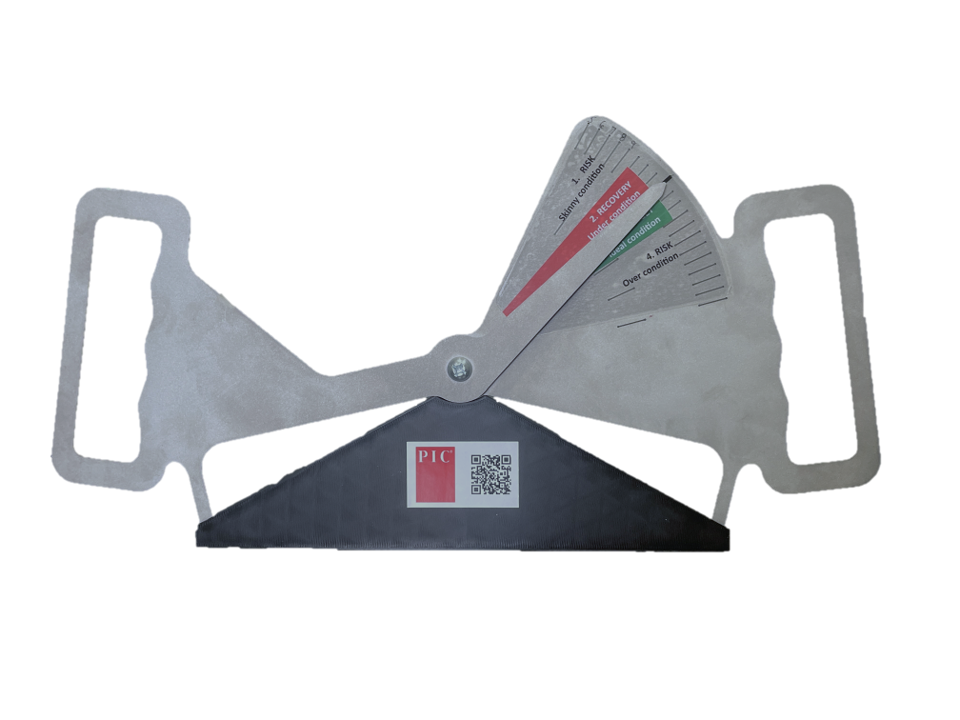Farrowing rate is a key driver of your farm performance and efficiency. To achieve a strong farrowing rate, focus on these five critical areas: heat detection, sow insemination, semen management, sow body condition score, and choosing the right females.
1. Pay attention to heat detection.
Heat detection starts with understanding how the heat cycle works. The farrowing rate is only as good as a farm’s capacity to find females in heat at the right time. Missing the heat by just 24 hours can compromise performance.
Identify and mark females showing show early signs of heat, like a swelling vulva, mucous discharge, and ears going up (but not locking up) when mounted. Let gilts get used to a boar first, then proceed to heat detection. Chart 1 indicates the desired window for breeding to achieve a 95% target conception rate.

2. Take your time with sow insemination.
Breeding is like an art. There isn’t an exact length of time required for sow insemination. Some females take longer, while others require less time to uptake a semen dose during conventional artificial insemination. Gilts should be managed to accommodate their unique needs – a 3-minute average is likely not long enough.
Semen backflow is a sign the process went too quickly. Elevate the end of a catheter to help slow down.
3. Remember semen quality.
Use fresh semen for the best breeding results. Semen age can impact total born numbers by 0.3 pigs and farrowing rate by 2% per day of storage. Try to avoid overordering, which can cause you to use older semen. It’s best to receive semen more frequently; three times per week is ideal.
Semen temperature is another important factor. Semen must be stored between 61° F (16.1° C) and 64° F (17.8° C). Even a 3.6-degree fluctuation can reduce shelf life up to one day.
Manage semen appropriately to keep it viable for breeding. Unpack semen doses before putting them in the refrigerator. Store doses loosely and horizontally to allow for air circulation and check temperatures in the storage unit daily. When you’re ready to use semen, put it in an insulated container with gel packs to maintain temperature. Pay special attention to post-cervical artificial insemination (PCAI) low sperm cell doses, as they are more sensitive to temperature fluctuations.
Unused semen should not be put back in the refrigerator for future use. Before removing semen from the refrigerator, know how many females need to be serviced to avoid taking too many doses to the breeding barn.
4. Manage feed and sow body condition score.
Monitor sow body condition score weekly to keep from breeding females that are too fat or too thin. Set regular reminders to adjust feed boxes accordingly.
Evaluate groups at key times like breeding and week 4, week 8, and week of gestation. Consider using a caliper for objective body condition evaluation to help tailor your feeding program.
Wean-to-service interval and breed-back times are good indicators of sow body condition score management and proper lactation feeding. When feeding is done right, more sows can be bred on days 4 and 5 post-weaning.

5. Choose the right females.
Use culling as a management tool. Regularly eliminate the bottom 10% of females in your herd. Culling limits the number of older parity females as well as low performing younger parity sows that also might have an issue preventing them from delivering another litter. Optimizing gilt entry can help reduce involuntary culling, primarily caused by lameness.
Treat the gilt development unit as the future of the farm and keep these best practices in mind:
- Select gilts with good feet and leg structure.
- Control sow body condition score.
- Consider using copper sulfate if you see major lameness issues coming from cracked hooves or sole lesions.
- Fill pens with sows of similar size and parity if using group housing.
- Select the right quantity and quality of gilts to develop for farm entry.
- Closely monitor puberty induction.
Details matter when it comes to improving your farrowing rate. Each action might have a small impact alone, but collectively they can make a huge impact.






